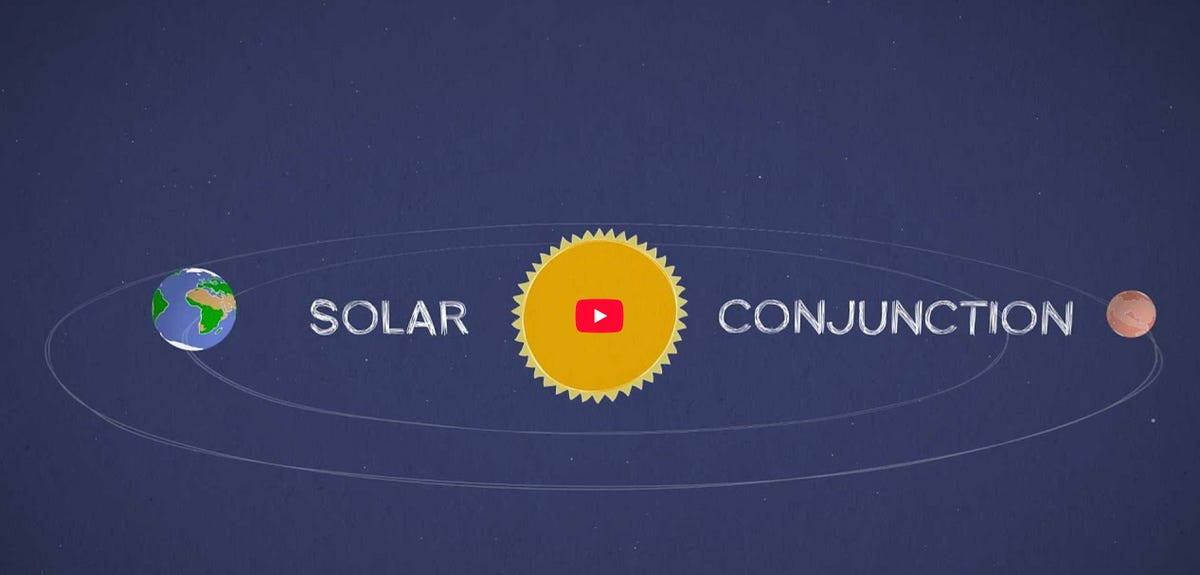On October 21, 2025, the interstellar object 3I/ATLAS will be exactly on the opposite side of the Sun relative to Earth, constituting a so-called `solar-conjunction’. When you look up towards the sky that day, keep in mind that 3I/ATLAS is hiding behind the Sun. Under these circumstances, it is impossible to observe 3I/ATLAS with Earth-based telescopes even shortly after sunset. Was this hideout planned as an opportune time for technological action?
In astronautics, the optimal point for a maneuver to speed up or slow-down a spacecraft is at closest approach to a massive object. An impulse in the direction of the peak velocity or opposite to it, would maximize the gain or loss of kinetic energy. As a result of this so-called Oberth effect, it is most energy-efficient for a spacecraft engine to burn its fuel when its orbital velocity is greatest. The velocity impulse from gas escaping the exhaust is analogous to the so-called Hills mechanism for the production of hypervelocity stars out of the tidal breakup of a binary star system by a supermassive black hole (theoretically predicted here and observationally confirmed here).
If 3I/ATLAS is a massive mothership, it will likely continue along its original gravitational path and ultimately exit the Solar system. In that case, the Oberth maneuver might apply to the mini-probes it releases at perihelion towards Solar system planets.
When will 3I/ATLAS reach the optimal time for these Oberth maneuvers? Only 8 days after it reaches solar conjunction. On October 29, 2025, 3I/ATLAS will reach a perihelion distance of 203 million kilometers. This opportune time happens to be during the same period when it is hidden from view to Earth-based telescopes. Was this a mere coincidence or a result of orbital design and basic astronautics?
Science is guided by evidence and not by expectations. We can find the answer to the above question by monitoring the sky during November and December 2025, and searching for any unusual activity of 3I/ATLAS or any new objects that came out of it. Over a period of months after perihelion, the tidal force from the Sun would separate the trajectories of objects that were thrusted out of 3I/ATLAS with velocity kicks.
Given the minimum diameter of 5 kilometers for 3I/ATLAS (as derived here), the solar illumination at perihelion would deliver more than 33 gigawatts of power to its surface, namely at least a third of the total power generated by 94 operating commercial nuclear reactors in the U.S. — the largest producer of nuclear power in the world.
As of now, 3I/ATLAS appears most likely to be a natural comet. But the remote possibility of an Oberth maneuver must be considered seriously as a black swan event with a small probability, because of its huge implications for humanity. Since its discovery on July 1, 2025, 3I/ATLAS was ranked 4 on the Loeb scale (quantified here and here) because of 8 anomalies:
1. The trajectory of 3I/ATLAS is aligned to within 5 degrees with the ecliptic plane of the planets around the Sun (see here).
2. 3I/ATLAS showed a sunward jet (anti-tail) that is not an optical illusion from geometric perspective, unlike familiar comets (see here).
3. 3I/ATLAS is about a million times more massive than 1I/`Oumuamua and a thousand times more massive than 2I/Borisov, while moving faster than both (see here and here).
4. The arrival time of 3I/ATLAS allows it to pass within tens of millions of kilometers from Mars, Venus and Jupiter (see here).
5. The gas plume around 3I/ATLAS contains much more nickel than iron (as found in industrially-produced nickel alloys) and a nickel to cyanide ratio that is orders of magnitude larger than all known comets, including 2I/Borisov (see here).
6. The gas plume of 3I/ATLAS contains only 4% water by mass, a primary constituent of familiar comets (see here).
7. 3I/ATLAS showed extreme negative polarization, unprecedented for all known comets, including 2I/Borisov (see here).
8. 3I/ATLAS arrived from a direction coincident with the radio “Wow! Signal” to within 9 degrees (see here).
Gladly, we expect to get data on 3I/ATLAS shortly after perihelion. On November, 4, 2025, ESA’s Jupiter Icy Moons Explorer (Juice) will pass within 64 million kilometers from 3I/ATLAS. If 3I/ATLAS will maintain a trajectory shaped by gravity only, it will get closest to Earth on December 19, 2025 at a distance of 269 million kilometers. On March 16, 2026, 3I/ATLAS will pass within 54 million kilometers from Jupiter and be observable to sensors in the UV, infrared and radio bands, onboard the Juno spacecraft (as recommended scientifically here and politically here).
Here’s hoping that the coming months will bring sufficient information to determine the true nature of 3I/ATLAS. In a blind date of interstellar proportions, we better observe the other side as much as possible before having an opinion or raising expectations for an engagement.
ABOUT THE AUTHOR
Avi Loeb is the head of the Galileo Project, founding director of Harvard University’s Black Hole Initiative, director of the Institute for Theory and Computation at the Harvard-Smithsonian Center for Astrophysics, and the former chair of the astronomy department at Harvard University (2011–2020). He is a former member of the President’s Council of Advisors on Science and Technology and a former chair of the Board on Physics and Astronomy of the National Academies. He is the bestselling author of “Extraterrestrial: The First Sign of Intelligent Life Beyond Earth” and a co-author of the textbook “Life in the Cosmos”, both published in 2021. The paperback edition of his new book, titled “Interstellar”, was published in August 2024.
First Appeared on
Source link













